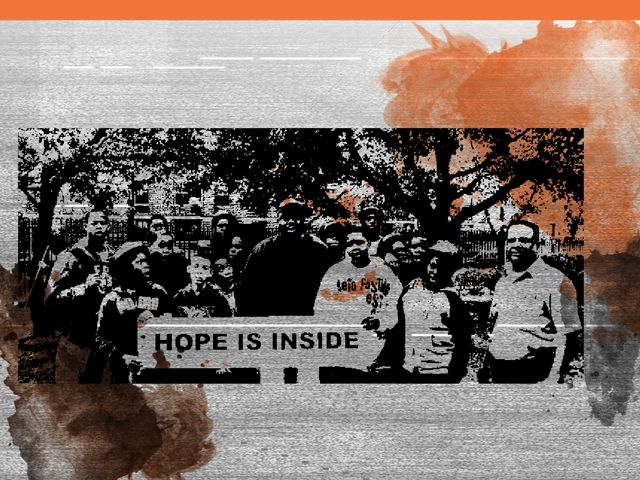Over the next two weeks, Next City will unroll short profiles of 77 people, places and ideas that have changed cities this year. Together, they make up our 2012 Disruption Index. Forefront subscribers can download the Index in full as a PDF, complete with beautiful designs and graphics by Danni Sinisi. Readers who make a $75 donation to Next City will have a full-color printed copy of the Index mailed to them.
Though only 13 miles separate the Midtown Manhattan offices of the Municipal Arts Society of New York and Brooklyn’s Brownsville neighborhood, the two are worlds apart from one another in so many ways.
Brownsville has some of the highest rates of violent crime in the city, and the single highest concentration of public housing units. Empty storefronts and overflowing trash cans dot the streets. The neighborhood is exactly the kind of place that many well-heeled New Yorkers never experience and rarely consider, especially when thinking about issues like design and preservation. For that reason, it is especially exciting to see MAS, a non-profit urban planning, design and preservation advocacy group, step away from its Manhattan base to join a coalition called the Brownsville Partnership, led by the homelessness and housing non-profit Community Partners. In addition to MAS, the partnership includes the New York City Housing Authority, public service providers and individual building operators and residents. Since the project launched in 2008, more than 500 families have been assisted through its housing programs, as well as hundreds more who’ve benefited from its early childhood programs, charter schools and job training centers.
Through these collaborative efforts, the neighborhood is finally beginning to get the kind of attention it needs, and long-needed economic development is finally starting to happen. Hopefully, this cross-borough collaboration will be the start of a trend that has more New Yorkers moving outside their own communities to engage for a city that is better for all its inhabitants.

Nate Berg is a writer and journalist covering cities, architecture and urban planning. Nate’s work has been published in a wide variety of publications, including the New York Times, NPR, Wired, Metropolis, Fast Company, Dwell, Architect, the Christian Science Monitor, LA Weekly and many others. He is a former staff writer at The Atlantic Cities and was previously an assistant editor at Planetizen.
















